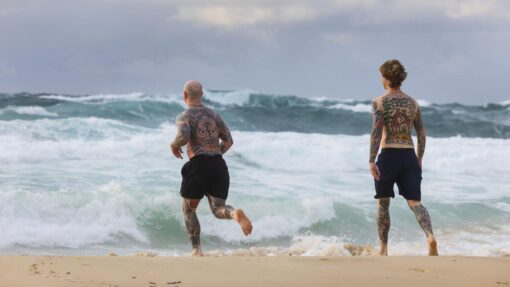Researchers on the trail of deadly micro jellyfish
John Kidman |
Just a millimetre or two long and transparent, potentially deadly juvenile Irukandji jellyfish are elusive. But scientists are discovering where to look.
Armed with venom said to be 100 times as potent as that of a cobra, the tiny marine animals terrorise tropical Australian beachgoers and are blamed for sending more than 50 people to hospital each year.
“During stinger season the loss of revenue for the tourism industry is significant and the direct costs associated with treating sting victims in northern Queensland runs into millions of dollars,” according to James Cook University’s Olivia Rowley.
“But despite the significant economic consequences Irukandji bring, our knowledge of the distribution and basic ecology of the polyp stage is very limited.”
Early life cycle specimens of the slippery jellyfish have never been found in the wild while still attached to coral, meaning research has relied exclusively on those laboratory-bred.
However Dr Rowley and her colleagues have turned the tables by exposing homegrown Irukandji to different habitat elements in order to narrow the gap.
The scientists subjected 1240 polyps to nine water samples with differing salinities and seven different temperatures while measuring their air intake and physical condition.
“The idea is that oxygen consumption will change to the extent the polyps like the environment they are in,” Dr Rowley said.
“This means instead of the very difficult job of trying to track them in the open sea we can deduce the specific ocean environments where they are likely to be found.”
Salinity fluctuations didn’t have a major effect but oxygen consumption rates increased with water temperature, with the jellyfish seemingly favouring a stable range of 28-34 °C.
“We should be looking for polyps in areas different from those in which we find the adult jellyfish – such as estuaries, oceanic margins and potentially the outlets of springs that carry fresh water via submarine channels to the seabed – known as wonky holes,” Dr Rowley said.
“For instance, adult Irukandji have been found as far south as Fraser Island … but winter water temperatures there average around 20C, which polyps would find unfavourable.
“With the potential of warming seas to shift the distribution of Irukandji southwards into heavily populated coastal areas this knowledge may become even more important.”
The findings follow a series of Irukandji stings in far north Queensland since Christmas.
The most recent victims were a primary school-aged boy and a woman in her 40s at Palm Cove, north of Cairns, on January 15.
A week earlier, a primary girl became the fifth child airlifted to hospital from Fraser Island during the school holidays with a suspected sting.
AAP


